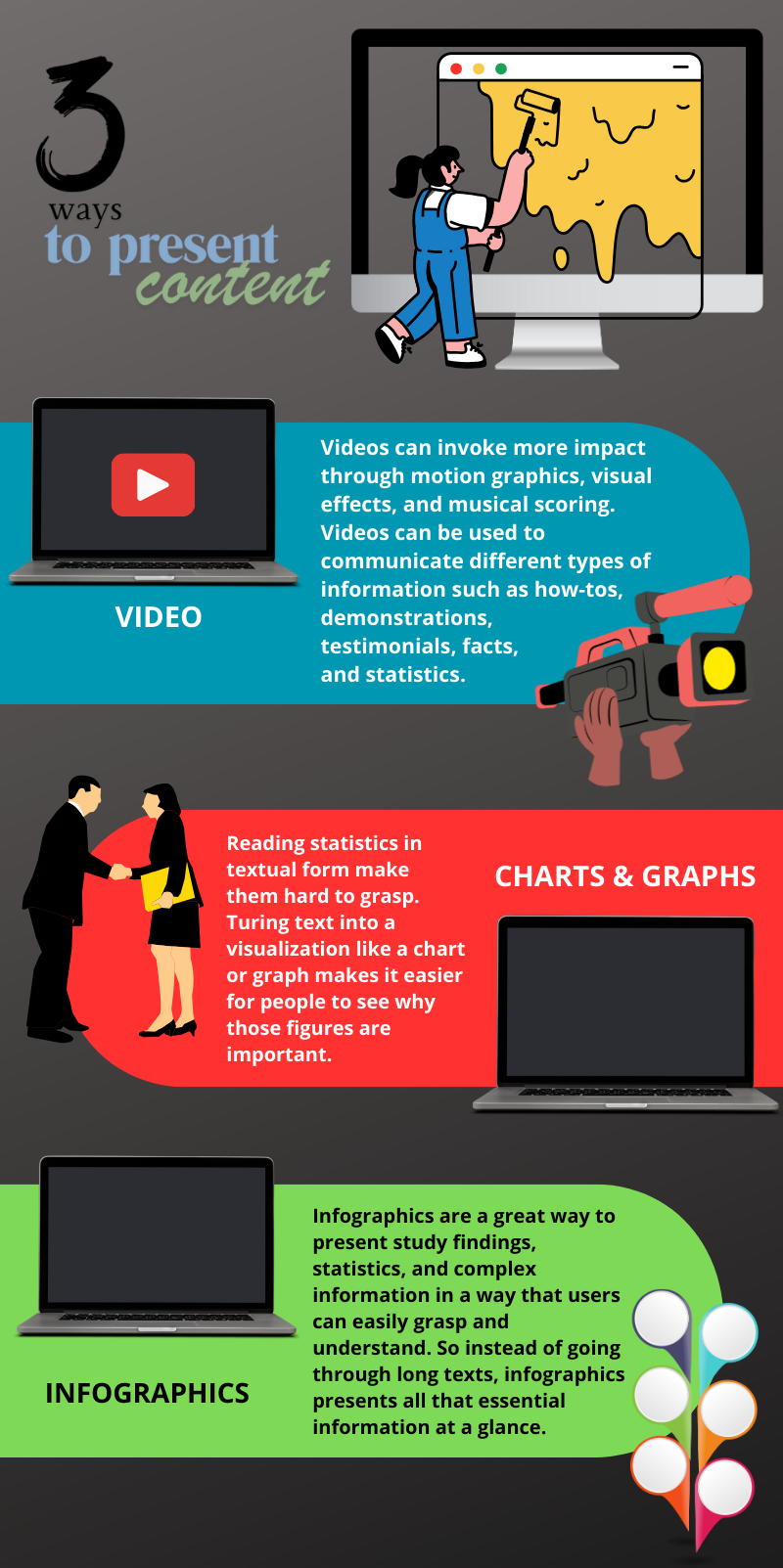Creating Good Content for Your Website and Why it’s Important
Often, in conversation, it’s not what you say, but how you say it that can make all the difference in the world. The same principal can be said for your website content. There are many ways content can be presented, and how it’s presented might make the difference between increasing customer interaction and a customer closing down your website as soon as it’s opened.
Video
Videos provide an entertaining way of presenting content in a short period of time. Because it allows for movement, videos can invoke more impact through motion graphics, visual effects, and musical scoring. Videos can be used to communicate different types of information such as how-tos, demonstrations, testimonials, facts, and statistics.
Charts and Graphs
These have been used for years for visually presenting data. They have their place particularly when providing data in business meetings or research. Statistics add more credibility to your content, but reading them in textual form make them hard to grasp. Turing text into a visualization like a chart or graph makes it easier for people to see why those figures are important.
Infographic
Being a designer, this is my favorite. Infographics have been around alot longer than we think.
Infographics are a great way to present study findings, statistics, and complex information in a way that users can easily grasp and understand. So instead of going through long texts, infographics presents all that essential information at a glance.
You might ask, how are these forms of content used in your marketing. The great news is that once you have them, they can be repurposed in many ways. For example, this article started as an email. The email is created like an outline; snippets of information so as not to force the reader to read through paragraphs of text.
For this blog article, we added a bit more text to the email format. After publishing it here, we post it to various social media platforms. Finally, fleshing out the “outline” more, we use the same content for our newsletter. Developing this process even further, you can create a series of articles on one topic, turn it into an e-book and offer it on your website for people to purchase and download.
As an example of “it’s not what you say, but how you say it,” I created an infographic based on the three forms of content mentioned at the beginning of this article. Which is more interesting to view? Which helps you grasp the data easier? Which takes less time to read?

